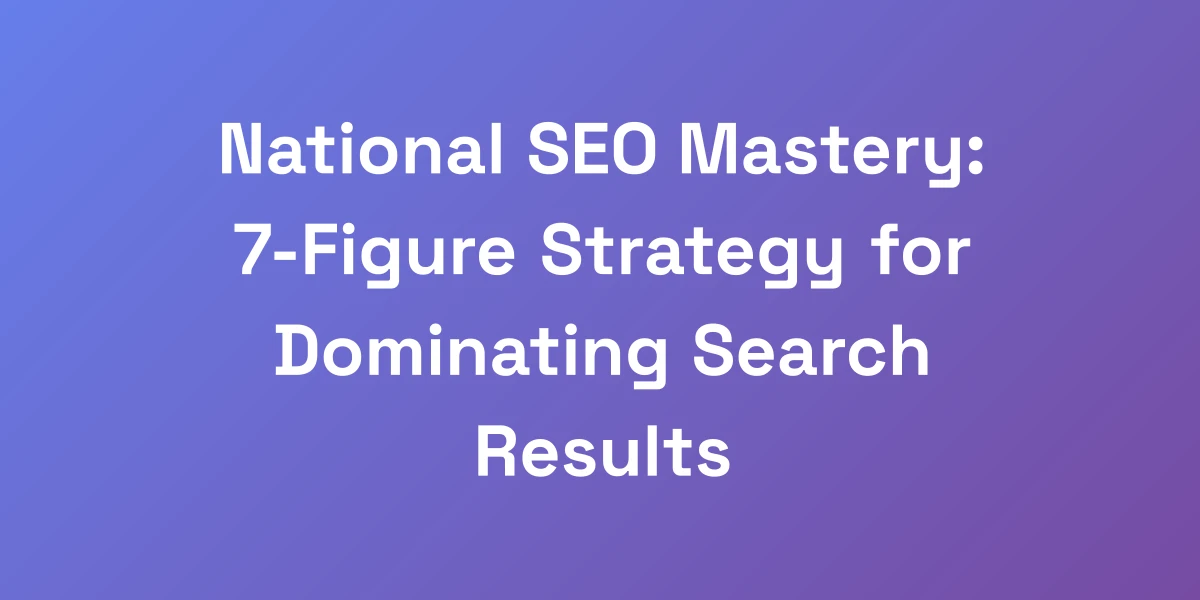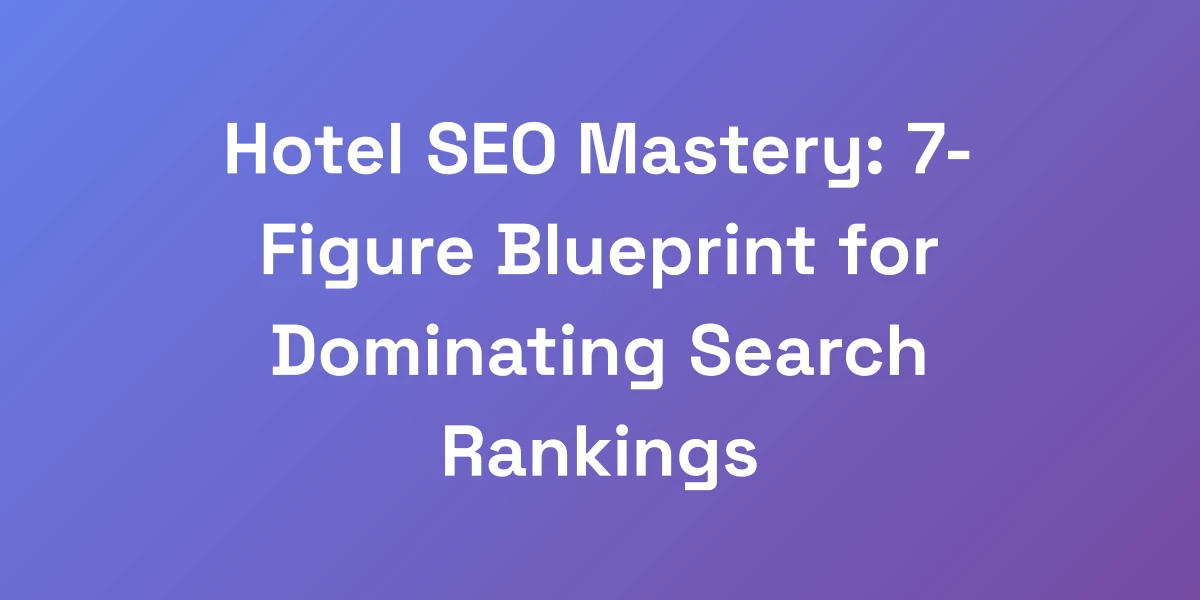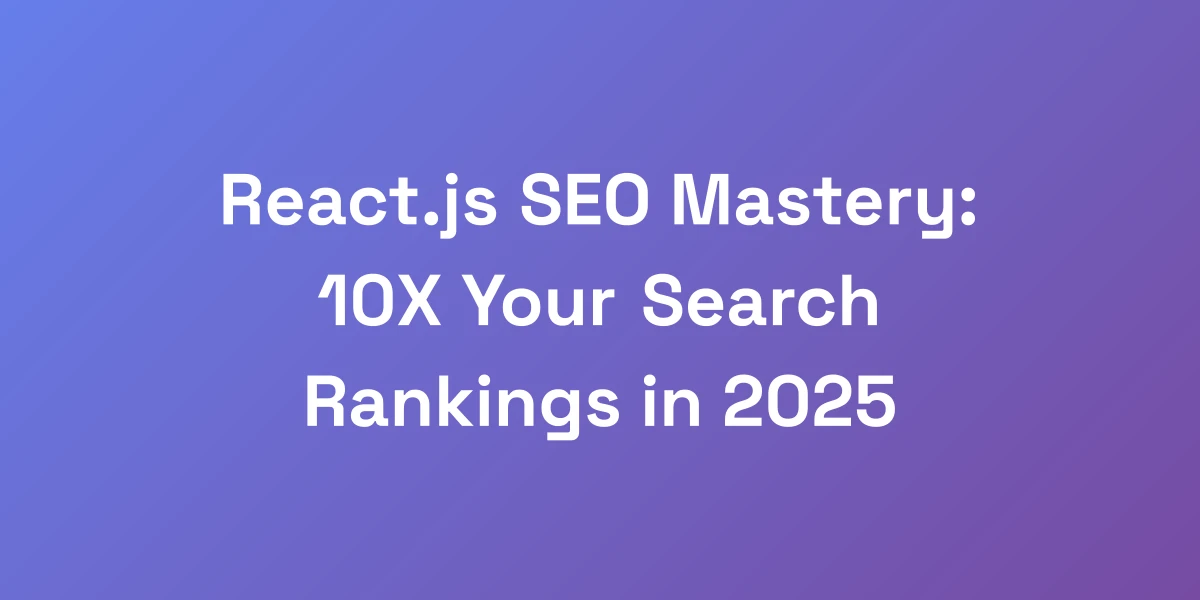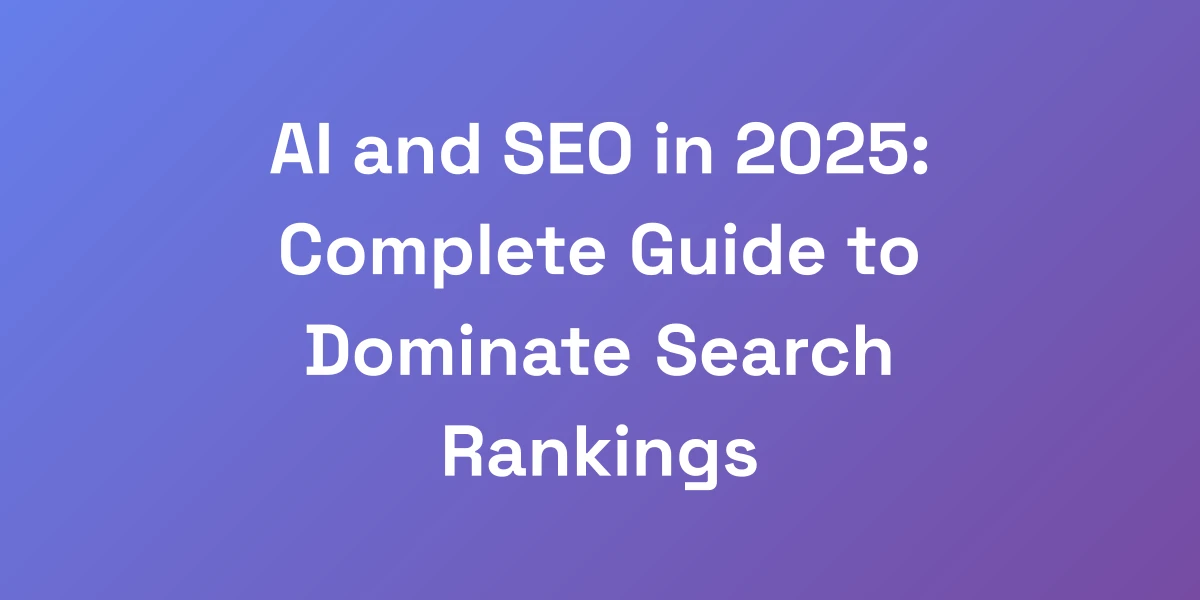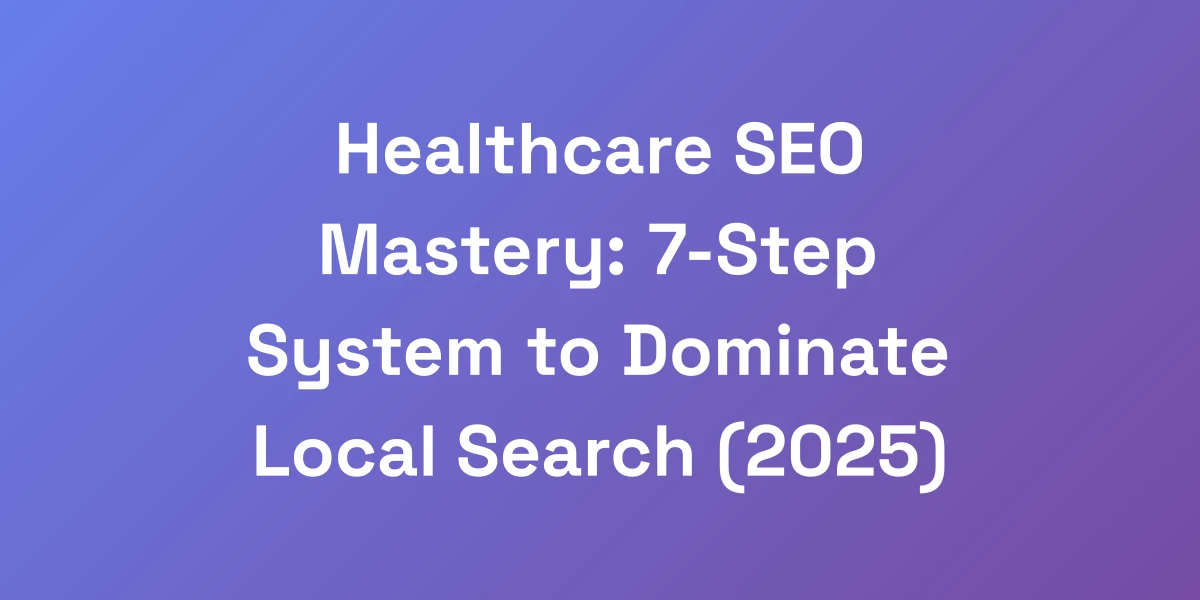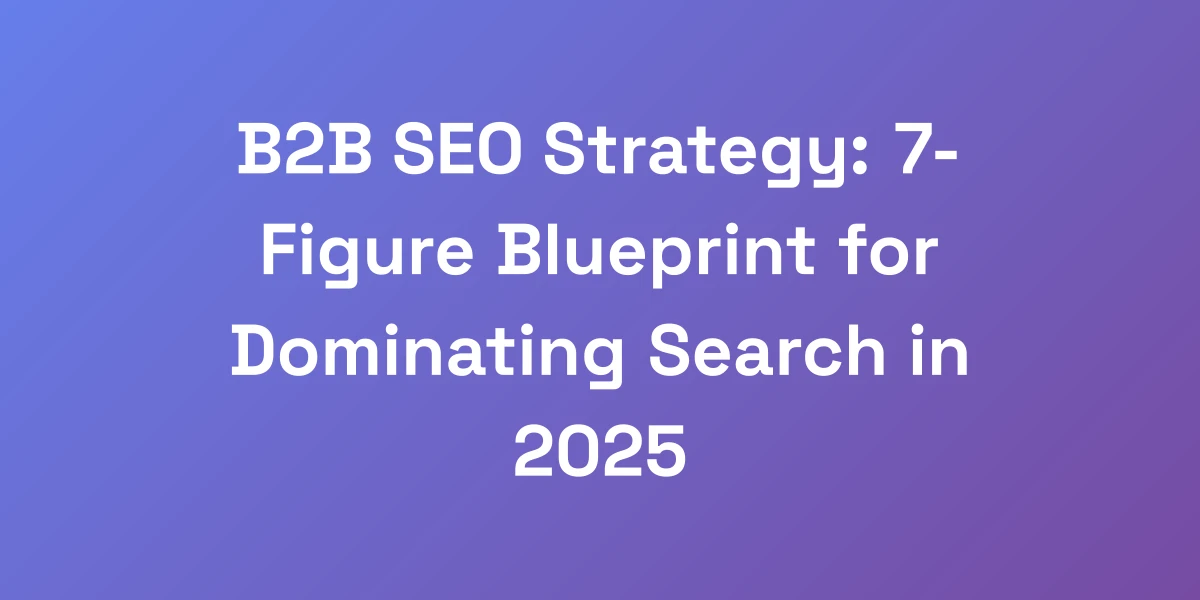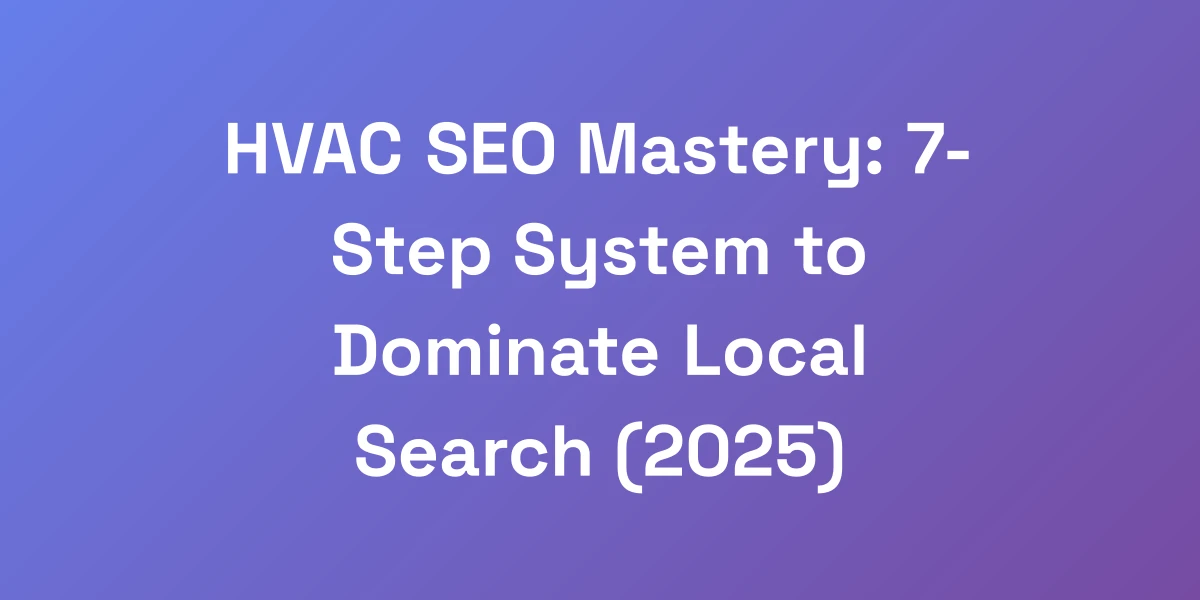
Retail SEO Mastery: 7-Figure Strategy to Dominate Search Rankings
Mar 17, 2025 | By [email protected]
Let’s cut to the chase: when it comes to retail, SEO isn’t just a buzzword—it’s the secret weapon that can catapult your store from the shadows to the spotlight. Imagine unlocking a 7-figure strategy that doesn’t just eke out incremental gains but fundamentally transforms how your business attracts, engages, and converts customers online.
We’ve seen it time and again: traditional methods fall short in the bustling online marketplace. Retailers grapple with the same challenges—stagnant traffic, low conversion rates, and elusive search rankings. But what if we told you there’s a way to not only overcome these hurdles but dominate your niche?
In this comprehensive guide, we’ll peel back the layers of retail SEO mastery, unveiling strategies that harness the power of psychological triggers, advanced technical optimizations, and content strategies that resonate with both search engines and shoppers. Get ready to dive deep into the frameworks and tactics that have driven over $100M in revenue for our clients. Are you in?
The Hidden Gold Mine of Retail SEO Most Stores Miss
Let me hit you with some truth: 97% of retail stores are leaving money on the table with their SEO.
We’ve transformed businesses from zero to millions by mastering retail SEO, and here’s what nobody’s telling you—it’s not about following the basic “SEO tips” everyone preaches.
It’s about understanding the psychological triggers that make both search engines and customers say “hell yes!” to your products.
What I’m about to share isn’t just theory—it’s the exact framework that’s generated over $100M in revenue for our retail clients.
Why Traditional SEO Advice Is Killing Your Retail Sales
Traditional SEO advice is like handing a novice a map and expecting them to find treasure. Sure, it provides direction, but without the right strategy, you’re aimlessly wandering.
Most retailers focus on keyword stuffing and generic backlink building, neglecting the nuanced interplay between user intent and search algorithms.
Here’s the kicker: search engines have evolved through Google algorithm updates. They’re no longer just about matching keywords but understanding context and user intent.
When you stick to outdated SEO practices, you’re essentially ignoring the very mechanics that drive conversions. It’s not about being seen; it’s about being relevant and compelling.
The Real ROI of Retail SEO: Beyond Traffic Numbers
Let’s talk numbers. E-commerce SEO boasts an impressive ROI of 1,600% compared to paid search.
But ROI isn’t just about traffic—it’s about conversion. For e-commerce businesses, SEO delivers between 200% to 275% ROI, translating to $2.75 profit per dollar invested.
This isn’t just theory; it’s a testament to the financial gravity of effective SEO. When optimized correctly, every aspect of your SEO strategy should funnel into measurable revenue growth.
The Psychological Framework That Drives Search Rankings
Understanding human psychology is the cornerstone of driving both search rankings and sales.
We apply a framework that taps into the subconscious triggers influencing buying decisions. Think of it as aligning your SEO strategy with the natural inclinations of your audience.
By weaving psychological insights into your content and technical SEO, search engines begin to prioritize your site as authoritative and relevant, pushing you higher in rankings.
It’s about creating an irresistible online presence that speaks directly to your customers’ needs and desires.
Why Most Retail SEO Strategies Fail (And How to Fix It)
Failure in SEO isn’t about doing something wrong; it’s about doing the right things for the wrong reasons.
Many retailers invest in SEO without a clear understanding of their target audience or the competitive landscape. This misalignment leads to wasted efforts and limited impact. To address these challenges, adopting SEO for Startups can help you focus on what truly matters and gain a competitive edge.
Here’s how to fix it:
- Deep Audience Analysis: Understand your customers’ behaviors, preferences, and search intent.
- Competitive Research: Identify what your competitors are doing and find gaps you can exploit.
- Holistic Strategy: Integrate content, technical SEO, and user experience seamlessly.
By addressing these foundational elements, your SEO strategy becomes robust, adaptable, and primed for success.
The Ultimate Retail Product Page Optimization Framework
Stop optimizing for algorithms and start optimizing for dollars.
Your product pages aren’t just content—they’re your digital salespeople working 24/7.
Here’s the brutal truth: if your product pages aren’t converting, your SEO efforts are worthless.
I’m going to show you our proprietary P.R.O.F.I.T System that combines psychological triggers with technical SEO to create pages that both rank and convert like crazy.
This isn’t about minor tweaks—it’s about fundamental transformation of your retail SEO strategy.
The P.R.O.F.I.T System Explained
The P.R.O.F.I.T System is our blueprint for optimizing product pages to maximize both visibility and conversions.
Psychological Triggers: Tap into the motivations and emotions that drive purchasing decisions.
Responsive Design: Ensure your pages are mobile-friendly and provide a seamless user experience.
Optimized Content: Craft compelling product descriptions that balance keywords with engaging narratives.
Fast Load Times: Optimize images and code to ensure your pages load swiftly, reducing bounce rates.
Incorporate Reviews: Leverage user-generated content to build trust and enhance credibility.
Technical SEO: Implement advanced schema markup and other technical elements to enhance search engine understanding and indexing.
Technical SEO Elements That Actually Move the Needle
Technical SEO often gets sidelined, but it’s the backbone of your online presence. Implementing search engine optimization automation tools can streamline these technical SEO tasks, ensuring efficiency and accuracy in your optimization efforts.
Here’s what you need to focus on:
- Site Architecture: Design a logical hierarchy that makes it easy for search engines to crawl and index your site.
- URL Structure: Create clean, descriptive URLs that reflect the content and keywords of your products.
- Schema Markup: Implement product, review, and local business schemas to enhance rich snippets and visibility in search results.
- Mobile Optimization: Ensure your site is fully responsive, providing a seamless experience across all devices.
- Speed Optimization: Compress images, leverage browser caching, and minimize JavaScript to boost load times.
These elements are crucial for ensuring that your product pages are not only discoverable but also provide a superior user experience that keeps visitors engaged and converting.
Additionally, keep abreast of the ever-changing landscape by following key Google ranking factors.
Product Description Frameworks That Convert
Product descriptions are more than just lists of features—they’re storytelling tools that connect with your audience on a deeper level.
Our framework involves:
- Headline That Hooks: Write compelling headlines that captivate and align with search intent.
- Benefit-Driven Content: Focus on how the product solves problems and improves the customer’s life.
- Clear CTAs: Use strong calls to action that guide the customer towards making a purchase.
- SEO Integration: Naturally incorporate target keywords without sacrificing readability or engagement.
By following this framework, your product descriptions become powerful tools that drive both search rankings and sales.
Image Optimization for Maximum Impact
Images are often the first thing a customer notices, and they play a significant role in conversion rates.
Here’s how to optimize them:
- High-Quality Visuals: Use clear, professional images that showcase the product from multiple angles.
- Alt Texts: Incorporate descriptive alt texts with relevant keywords to improve SEO and accessibility.
- Compression: Optimize image sizes to ensure fast load times without compromising quality.
- Responsive Images: Ensure images adjust seamlessly across different devices and screen sizes.
Optimized images enhance user experience, reduce bounce rates, and contribute to better search engine rankings.
Schema Markup Secrets for Retail Pages
Schema markup is like giving search engines an instruction manual for your content.
Implementing the right schema types can significantly enhance your search visibility by enabling rich snippets:
- Product Schema: Provides detailed information about your products, including price, availability, and reviews.
- Review Schema: Displays customer reviews and ratings directly in search results, boosting credibility.
- Local Business Schema: Enhances local search visibility for retail stores with physical locations.
These schemas make your product pages more attractive in search results, increasing click-through rates and driving more qualified traffic to your site.
Local Retail SEO: Dominating Your Geographic Market
Here’s what most local retailers don’t understand: dominating your local market isn’t about having the most backlinks or the perfect meta descriptions.
It’s about creating an omnipresent digital footprint that makes your store impossible to ignore.
We’ve helped local retailers increase foot traffic by 300% using these exact strategies.
The key is leveraging what we call the Local Authority Trinity—a combination of content, technical optimization, and local presence that creates an unstoppable force in your market.
The Local Authority Trinity Framework
The Local Authority Trinity is our holistic approach to dominating local search results:
- Content: Create localized content that speaks directly to the needs and interests of your community.
- Technical Optimization: Ensure your website is optimized for local search with accurate NAP (Name, Address, Phone Number) information and mobile-friendly design.
- Local Presence: Build a strong presence on local directories, Google Business Profile, and encourage local reviews.
By mastering these three pillars, you establish authority and trust within your local market, driving both online and offline sales.
Google Business Profile Optimization Tactics
Your Google Business Profile (GBP) is a critical component of local SEO.
Here’s how to optimize it effectively:
- Complete Your Profile: Ensure all information is accurate, including business name, address, phone number, and operating hours.
- High-Quality Images: Upload professional images of your storefront, products, and services to attract potential customers.
- Regular Updates: Post updates, offers, and events to keep your profile active and engaging.
- Categories and Attributes: Select relevant categories and attributes that accurately describe your business.
A well-optimized GBP not only improves your visibility in local search results but also builds credibility and trust with potential customers.
Local Content Creation Strategy
Content is the bridge between your business and the local community.
Develop a content strategy that includes:
- Local Guides: Create guides that highlight local events, landmarks, and interests related to your products or services.
- Customer Stories: Share testimonials and success stories from local customers to build trust and relatability.
- Community Involvement: Write about your involvement in local charities, events, or sponsorships to demonstrate community commitment.
- SEO-Optimized Content: Incorporate local keywords naturally to enhance search engine visibility.
This localized content not only improves your SEO but also fosters a deeper connection with your community, driving sustained engagement and loyalty.
Review Management and Generation
Reviews are the currency of trust in local SEO.
Here’s how to manage and generate impactful reviews:
- Encourage Customer Feedback: Prompt satisfied customers to leave reviews on your GBP and other review platforms.
- Respond to Reviews: Engage with reviewers by responding to both positive and negative feedback, showing that you value their opinions.
- Leverage Reviews in SEO: Highlight positive reviews on your website and social media to build credibility and enhance local SEO.
- Monitor Review Platforms: Use tools to track and manage reviews, ensuring you address any issues promptly.
Effective review management not only boosts your local search rankings but also builds a trustworthy reputation that attracts more customers.
Local Link Building That Actually Works
Building local links is essential for establishing authority in your geographic market.
Here’s how to do it effectively:
- Partner with Local Businesses: Collaborate with other local businesses for mutual backlinking opportunities.
- Local Directories: Get listed in reputable local directories and industry-specific listings.
- Community Sponsorships: Sponsor local events or charities, earning backlinks from their websites.
- Local Content Promotion: Share your localized content with local bloggers and media to generate inbound links.
Quality local links signal to search engines that your business is a trusted and integral part of the community, enhancing your local SEO performance.
Advanced Content Strategy for Retail SEO
Content isn’t king—it’s the entire kingdom.
But here’s the thing: most retail content strategies are pure garbage.
They focus on pumping out generic blog posts that nobody reads.
Instead, we’re going to show you how to create what we call Revenue-Generating Content Assets—pieces that not only rank but directly influence buying decisions.
We’ve used this exact framework to generate $50K+ per month from single pieces of content.
Revenue-Generating Content Framework
Our framework revolves around creating content that serves dual purposes: enhancing SEO and driving sales.
Here’s how:
- Targeted Topics: Focus on topics that align with your customers’ pain points and buying intents.
- Keyword Integration: Seamlessly incorporate high-value keywords without compromising the content’s quality.
- Engaging Formats: Use a mix of blogs, guides, videos, and infographics to cater to different learning preferences.
- Strong CTAs: Embed clear and compelling calls to action that guide readers towards conversion paths.
- Continuous Optimization: Regularly update and refine content based on performance metrics and changing trends.
This approach ensures that every piece of content is a potent tool for both attracting traffic and converting visitors into customers.
Category Page Optimization Strategy
Category pages are the unsung heroes of your website—doors that lead customers to their desired products.
Here’s how to optimize them effectively:
- SEO-Friendly Titles: Craft descriptive and keyword-rich titles that clearly define the category.
- Compelling Descriptions: Write engaging descriptions that highlight the benefits and unique selling points of the category.
- Internal Linking: Strategically link to relevant product pages and other categories to enhance site structure and SEO.
- Rich Media Integration: Incorporate high-quality images and videos to make the category page more attractive and informative.
- User-Friendly Navigation: Ensure that the category layout is intuitive, making it easy for users to find what they’re looking for.
Optimized category pages drive better user engagement, reduce bounce rates, and improve overall SEO performance.
Blog Content That Drives Sales
Blogs shouldn’t just inform—they should inspire action.
Implementing effective business blogging strategies ensures your content not only informs but also drives conversions.
Here’s how to make your blog a sales-driving machine:
- Educational Content: Provide valuable information that helps customers make informed purchasing decisions.
- Product Spotlights: Highlight specific products, detailing their features, benefits, and real-world applications.
- Customer Stories: Share success stories and testimonials to build trust and showcase the effectiveness of your products.
- SEO Optimization: Use targeted keywords and internal linking to drive organic traffic to your blog and product pages.
- Interactive Elements: Incorporate elements like polls, quizzes, and comment sections to engage readers and encourage interaction.
By aligning your blog strategy with sales goals, you create content that not only attracts but also converts visitors into loyal customers.
User-Generated Content Optimization
User-generated content (UGC) is a powerful lever for both SEO and social proof.
Here’s how to optimize it effectively:
- Encourage Reviews: Prompt customers to leave reviews and ratings on product pages and review platforms.
- Showcase Customer Photos: Allow customers to upload photos of your products in use, enhancing authenticity.
- Interactive Q&A: Implement sections where customers can ask questions and receive answers about your products.
- Social Media Integration: Embed social media posts featuring your products to increase visibility and engagement.
Optimized UGC not only enriches your content but also builds a community around your brand, fostering trust and encouraging repeat purchases.
Content Distribution and Amplification
Creating great content is just half the battle. Getting it seen by the right audience is where the real work begins.
Here’s how to distribute and amplify your content effectively:
- SEO-Friendly Channels: Publish content on platforms that are primed for SEO benefits, such as your website and authoritative blogs.
- Social Media Marketing: Share your content across social media channels to reach a broader audience and drive traffic back to your site.
- Email Marketing: Incorporate your content into email campaigns to engage existing customers and encourage shares.
- Influencer Collaborations: Partner with influencers to amplify your content’s reach and credibility.
- PPC and Retargeting: Use paid promotions to boost visibility and retarget visitors who interacted with your content but haven’t converted yet.
Effective content distribution ensures that your revenue-generating assets reach their full potential, maximizing both traffic and conversion rates.
Technical SEO Implementation and Scaling
Let’s get technical, but not in the way you’re thinking.
Most retail stores overcomplicate technical SEO while missing the fundamentals that actually drive revenue.
I’m going to show you our 80/20 Technical Framework—the 20% of technical optimizations that drive 80% of the results.
This is the same system we’ve used to scale retail sites from 100 to 100,000 daily visitors without losing conversion rates.
Site Architecture for Maximum Crawlability
The foundation of any robust SEO strategy is a well-structured site architecture.
Here’s how to design it for maximum crawlability:
- Logical Hierarchy: Organize your website into clear, intuitive categories and subcategories to help search engines navigate and index your content efficiently.
- Silo Structure: Group related content together to reinforce topical relevance and boost authority in specific niches.
- Internal Linking: Use strategic internal links to guide search engines and users to important pages, enhancing the flow of link equity throughout your site.
- XML Sitemaps: Ensure your XML sitemap is up-to-date and properly submitted to search engines to facilitate better indexing.
- Breadcrumbs: Implement breadcrumb navigation to improve user experience and provide additional contextual information to search engines.
A well-architected site not only improves SEO but also enhances the user experience, making it easier for customers to find what they’re looking for and increasing the likelihood of conversions.
Speed Optimization That Matters
Speed is non-negotiable in the e-commerce world. A fast-loading site can be the difference between a sale and a lost customer.
Here’s how to optimize for speed effectively:
- Image Compression: Use tools like TinyPNG or ImageOptim to reduce image sizes without compromising quality.
- Minimize HTTP Requests: Reduce the number of elements on your page to lower the number of HTTP requests required to load the page.
- Leverage Browser Caching: Store frequently used files in the user’s browser to decrease load times on subsequent visits.
- Optimize CSS and JavaScript: Minimize and defer the loading of CSS and JavaScript files to improve rendering times.
- Use a Content Delivery Network (CDN): Distribute your content across multiple servers worldwide to ensure faster load times for global visitors.
Implementing these speed optimizations can lead to a 5.6% increase in conversion rates for every second shaved off your load times.
Mobile-First Optimization Tactics
With 59% of all web traffic coming from mobile devices, mobile-first optimization is imperative.
Here’s how to ensure your site excels on mobile:
- Responsive Design: Use responsive design techniques to ensure your site adapts seamlessly to various screen sizes and orientations.
- Touch-Friendly Elements: Make buttons and links large enough for easy tapping and navigation on touchscreens.
- Optimize Loading Speed: Mobile users expect fast load times, even more so than desktop users. Prioritize speed optimizations for mobile devices.
- Streamlined Navigation: Simplify your menu structures and incorporate mobile-friendly navigation patterns like hamburger menus.
- Mobile-Specific Features: Utilize features like click-to-call and location-based services to enhance the mobile user experience.
Google’s mobile-first indexing means that your mobile site is what gets primarily considered for ranking. Ensuring a superior mobile experience is crucial for maintaining and improving your search rankings.
International SEO for Retail Expansion
Expanding your retail business internationally opens up a world of opportunities, but it comes with its own set of SEO challenges.
Here’s how to tackle international SEO effectively:
- Hreflang Tags: Use hreflang tags to indicate to search engines the language and geographical targeting of your pages, ensuring the right audience sees the right content.
- Localized Content: Adapt your content to cater to local cultures, languages, and preferences to resonate with diverse audiences.
- Country-Specific Domains: Consider using country-specific domains or subdomains to enhance local search visibility.
- Global Keyword Research: Conduct keyword research specific to each market to understand local search behaviors and preferences.
- Local Backlinks: Build backlinks from reputable local websites to boost your authority and relevance in each target market.
By mastering international SEO, you can effectively scale your retail operations globally, tapping into new markets and driving substantial revenue growth.
Automated SEO Monitoring and Maintenance
SEO isn’t a one-time task—it’s an ongoing process that requires continuous SEO Automation and maintenance.
Here’s how to automate and streamline this process:
- SEO Tools: Utilize tools like SEMrush, Ahrefs, or Moz to monitor your site’s performance, track keyword rankings, and identify opportunities for improvement.
- Automated Reporting: Set up automated reports to keep track of key metrics and stay informed about your SEO health without manual intervention.
- Cron Jobs: Implement cron jobs to regularly check for broken links, ensure content is up-to-date, and monitor site speed.
- Content Audits: Schedule periodic content audits to refresh outdated information, optimize existing content, and identify gaps in your content strategy.
- Alert Systems: Set up alerts for significant changes in rankings, traffic drops, or technical issues to address problems proactively.
Automating your SEO monitoring and maintenance ensures that your site remains optimized, competitive, and capable of adapting to the ever-evolving search landscape. For those who prefer to outsource, SEO for Freelancers can provide the expertise needed to maintain your SEO efforts effectively.
Conclusion
Mastering retail SEO isn’t about quick fixes or fleeting trends—it’s about implementing a strategic, comprehensive approach that aligns with both search engine algorithms and customer behavior.
We’ve explored the untapped potential of advanced SEO strategies, from optimizing product pages with our P.R.O.F.I.T System to dominating local markets with the Local Authority Trinity. By delving into content strategies that drive revenue and embracing technical optimizations that scale, you’re not just keeping up with competition—you’re setting the pace.
Now, it’s your turn to take these insights and apply them to your retail business. Start by auditing your current SEO efforts, identify the gaps, and implement the strategies that we’ve outlined. The journey to 7-figure success begins with a single, informed step.
Ready to elevate your retail SEO game? Let’s get started. Share your experiences in the comments below, or reach out with questions—let’s dominate those search rankings together!


